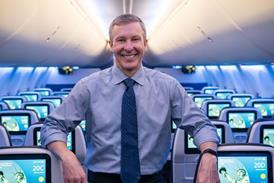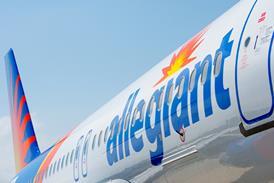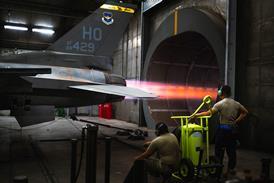Aerion is hopeful that its Mach 1.6 business jet will have an original equipment manufacturer signed on by year-end, a milestone that could see the eight- to 12-passenger aircraft in the skies around 2014, says chief operating officer Michael Henderson.
"We're talking with a lot of OEMs and there's a good deal of interest in the programme," says Henderson. He says Aerion has been working with the prospective OEMs to line up risk-sharing partners willing to invest about $2 billion in the development programme, which would include four to six certification aircraft. The target unit cost is $70-80 million per aircraft.
Henderson would not identify the candidate OEMs, although he says they will probably come from the ranks of the upper end of the business jet community. "You won't be surprised by the likely OEM," he adds. Gulfstream, which has been researching supersonic jets for some time, is a possible choice, although officials have said they will not consider building a vehicle until the US government sets rules on noise caps for supersonic flight overland, an action Henderson is not expecting soon. Dassault too has been contemplating such a programme.
Key to achieving the dual cruise efficiency is the aircraft's supersonic natural laminar flow (NLF) technology for the wing, developed and patented by Aerion chief technology officer, Richard Tracy. Aerion-developed optimisation tools also play a critical role, says Henderson.
The company continues to hone those analytical aids and is working with NASA to finalise a research initiative to test NLF characteristics on a wing section attached to the underside of the NASA F-15 test aircraft. The data, combined with test results from a similar NLF test with a smaller wing section several years ago, will be used to tweak design tools.
Henderson, formerly the chief project engineer for enabling technologies at Boeing and a key player in the company's supersonic research efforts for nearly a decade, says the Pratt & Whitney JT8D-219-powered twinjet will be capable of operating out of "community" airports handling today's business jet aircraft.
A quieting programme for commercial JT8D-family engines, developed in partnership with P&W and Aviation Fleet Solutions and financially backed by Aerion chairman Robert Bass, will make the engines Stage 4 noise compliant or better. "It will be as good as any other jet," says Henderson. "We won't stand out as a bad actor."
Source: Flight International























